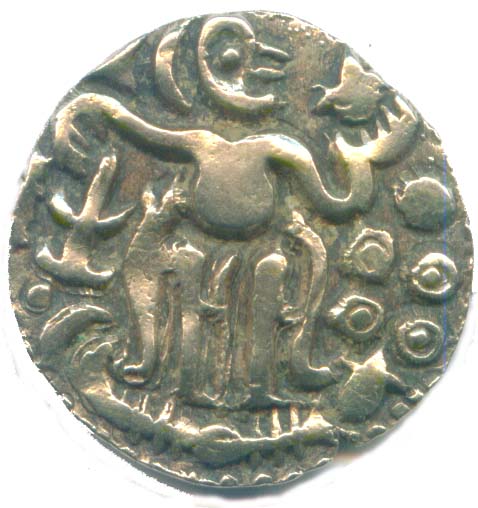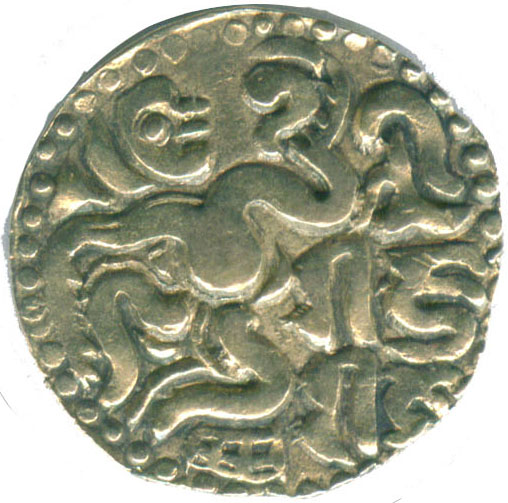| SPECIFICATIONS | |
| Denomination | Kahavanu |
| Metal | Gold 0.47 |
| Alloy | Ag%Cu = 0.83 |
| Type | struck |
| Diameter | 20.2 mm |
| Thickness | 2.1 mm |
| Weight | 4.30 gms |
| Die Axis | 180° |


|

| 
| ||||||||||||||||||
| Codrington #104; Mitchiner #729; Biddulph #5 | ||||||||||||||||||||
|

| 
| ||||||||||||||||
| Codrington #104; Mitchiner #729; Biddulph #5 | ||||||||||||||||||
|

| 
| ||||||||||||||||
| Codrington #104; Mitchiner #729; Biddulph #5 | ||||||||||||||||||
There are two well-known varieties of RajaRaja gold coins closely resembling the Lanka Kahavanuva of type IIIC(1). The type shown above with four annulets surmounted by ball struck in or for use in Lanka where it is not uncommon. The type found only in mainland with a crescent on top the four annulets on the right of obverse. It may have been stuck for circulation in the conquered Pandyan provinces where the Sinhala gold coins were well known.
These coins are extensively discussed by Biddulph in his 1966 monogram
on Coins of the Cholas. He goes into extensive discussions to
establish that the Rajaraja Chola coins were the prototype to the
"Standing and seated King" series associated with Lanka.
These RajaRaja Chola coins found in Lanka resemble the Kahavanuva. The similar coins found in in India, known as Madais, are of better workmanship but of inferior gold which degraded with time in purity, until in later issues were of merely gold plated silver.
Rajaraja Chola (985-1014) invaded Lanka in 990 CE and conquered the northern half. Ruining Anuradhapura he made Polonnaruwa his capital on the island;. Rajendra (1014-1044) Chola succeeded in extended Chola occupation over the whole island of Lanka in 1018. Lanka became regained independence from Chola occupation in 1070 under Vijayabahu I (1055-1110).
Text edited from
The kahavanu coins were scanned at 600 dpi and displayed at 300 dpi, Coin-1 was obtained in 2001 December from O. M. R. Sirisena an expert collector in Colombo, Lanka. The other coins from a large hoard purchased in 2013 January from a dealer in Colombo, Sri Lanka.